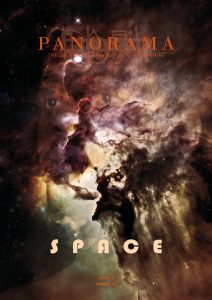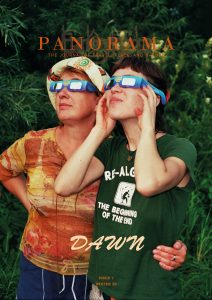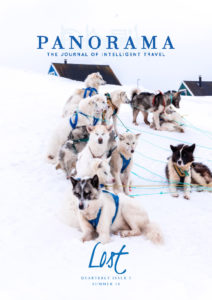The Amazon rainforest, spanning nine countries of South America, is the world’s largest ecosystem and the most biodiverse place on earth with around 80,000 species of plants alone. Vital to regulating the global climate, it is also home to around two million indigenous people.
The rainforest recycles moisture to the atmosphere, creating ‘flying rivers’ of water that rain over the Amazon and beyond. Yet many scientists believe that deforestation and drought caused by climate change are driving the Amazon rainforest towards an irreversible ‘tipping point.’, beyond which the forest could become a dry savanna.
Continued deforestation of the Amazon could release billions of tonnes of carbon dioxide into the atmosphere. This could lead to a continued heating of the Earth’s climate, rendering parts where humans can no longer live and a continuation of the age of extinction.
To learn more about the extraordinary biodiversity of the Amazon, the indigenous people who live there, and what we all stand to lose if deforestation continues, I spoke to Professor Sir Ghillean Prance, one of the world’s leading botanists and explorers of the Amazon rainforest. Previously, Sir Ghillean was the Director of the New York Botanical Garden, and later the Director of the Royal Botanic Gardens, Kew. An author of 26 books and over 590 scientific works, Sir Ghillean’s most recent book The Amazon Forest and its People in Black and White (2022) published by Butterflies and Amazonia, spans over 25 years working at the New York Botanical Garden between 1964 and 1988 whilst carrying out 39 Amazonia expeditions during which he collected and identified over 350 new plant species.
Julia Knights: What inspired you to become a botanist of the Amazon rainforest?
Ghillean Prance: I have always been interested in the exploration side of botany since childhood. After my undergraduate degree in botany, my first expedition was to Turkey in 1960. I then started doctoral work on a group of African plants in the family Chrysobalanaceae. I soon discovered that the centre of diversity of this pantropical family was the Guianas and Amazonia and wanted to go there to follow this up. I was very fortunate to be able to join a New York Botanical Garden expedition to Suriname in 1963. That stimulated my interest in the rainforests of South America, and Amazonia soon became the focus of my research and exploration.
How would you describe the Amazon rainforest as an ecosystem?
The common perception is that the Amazon is a mass of tall green forest. That is far from the truth as there are many different habitats and types of vegetation in the region. The largest division is between the areas that are periodically flooded by the rise and fall of the water of the rivers in contrast to the terra firme that is never flooded. There are many plant species confined to one of these types of forest. There are several large tracts of open grassland savanna within Amazonia such as the large one in Roraima state and neighbouring Guyana. There are large areas of savanna forest on the white sands of the upper Rio Negro region and also elsewhere. These are termed campina or caatinga forest and have a lower less dense forest with many different species from the tall forests. There are hills to the north and south of the region that also have their own vegetation types. This variation of vegetation is caused both by soil and climate factors and adds to the enormous species diversity of plants and animals in the region.

Insects and plants have a strong dependency with each other. You are famous for identifying how the Victoria Amazonica, the royal water lily which lives in lakes and slow moving streams of the Amazon is pollinated. Can you share how and what you discovered?
The study of the way plants are pollinated and seeds are dispersed is vital knowledge to the understanding of the Amazon ecosystem and I have been involved with both these aspects in many ways. One of my biggest studies was of the pollination of the Victoria water lily. I was told by one of my field assistants that there were always beetles inside the flowers of this water lily and decided one day to investigate this further. This came about when in 1973-1975 I was setting up the first graduate programme in Botany in the Amazon region. During that period I had to spend a lot of my time in teaching and administration in the Brazilian Amazon city of Manaus and could not go out on extended month long field trips. I decided to study the water lilies on a lake just an hour away from Manaus by boat. For a year I made a monthly two day visit to the lake to watch a full year’s cycle of the water lily. The flowers open at dusk and are coloured white. As they open, the temperature inside the flower is about 11 degrees warmer than ambient temperature and a strong scent is emitted. As the flower is opening scarab beetles of the genus Cyclocephala begin to arrive and enter into the flowers. By midnight the flowers close up and the beetles become trapped inside. They are warm and feed on tissue inside the flowers without harming any of the essential reproductive parts of the flower. During the next day the flower changes colour to deep reddish-purple. When darkness approaches the flowers open again and release pollen. The beetles emerge from the central cavity of the flower and are dusted with pollen. They fly on to another plant with a white flower and so cause pollination. This is a wonderful co-operation between a beetle and water lily.

What happens in the rainforest impacts upon rainfall elsewhere in Brazil and globally. Brazilians talk about the river in the skies.
The “river in the skies” is a term for the circulation of Amazonian rainfall. Most of the rain there comes off the Atlantic Ocean and falls heavily on the forest of the eastern Amazonia. Only 25% of the water flows out into the rivers and on to the sea and 75% is recycled by evaporation from the leaves and the transpiration of the trees (evapotranspiration). The transpiration pumps 50% of the water from the roots up to leaves to emerge back into the air. This recycled water is carried further west by the wind currents, falls again and the process is repeated several times across the Amazon forest. This is the flying river. When it comes up against the high Andes mountain the river is diverted southward towards southern Brazil and Argentina to supply those important regions for agriculture. Recent climate anomalies have meant that in some years the flying river has not functioned well and there has been drought in these southern regions.
You’ve spent a lot of time living with and studying the livelihoods of different indigenous tribes of the Amazon, documenting the plants they use for their rituals, medicines, hunting and food. Can you tell us more?
I have had the privilege of carrying out ethnobotanical work with eight different Amazonian tribes. This has been fascinating and increased my admiration for these wonderful people. The thing that has impressed me most is the way in which they have discovered all the resources they need for life from the plants and animals in the forest. Apart from food, material for houses and medicines there are several other resources that each tribe has found which seem to be essential to their life: material to make bows and arrows or blowguns, arrow poisons, fish poisons and narcotics for their spiritual and ceremonial life. Wherever they live they have found local plant resources for each of these uses as there are many different plant species used for all of these needs.

The tribe with which I have spent the most time is the Yanomami of the northwestern part of Amazonia on the frontier between Brazil and Venezuela. My most interesting study was of their use of fungi. The Yanomami are the only Amazon tribe that make extensive use of edible fungi. In the course of our work there together with mycologist Oswaldo Fidalgo, we identified 28 species of mushrooms eaten by the Yanomami. More recently, using information from our inventory of Yanomami mushrooms, Brazilian scientists have studied them further and taught the Indians to freeze dry some species that are now sold in health food shops and served in restaurants in the city. This is now providing a source of income for the Sanema clan of the Yanomami.

You also spent time with the Tikuna tribe – found on the border region between Peru, Colombia, and Brazil, and the largest tribe in Amazonian Brazil with about 36,000 in population size. Many were enslaved during the era of rubber tapping and suffered at the hands of the developers. Is that still the case now for the Tikuna tribe and others?
The history of many tribes including the Tikuna is sad and shameful. They were indeed taken into slavery to tap rubber trees during the rubber boom of the early 1900s. A huge number died in the process. The remarkable thing today is the survivors who escaped further into the forest have now developed into a large and important nation in the upper parts of the Brazilian Amazon and in bordering Colombia. They maintain their culture and language and some have integrated more into Brazilian society while others have chosen to maintain their forest lifestyle further away from the main rivers. They are a political force of the upper Amazon and there is now a considerable amount of educational material available in the Tikuna language.
You have studied the vines of the Amazon in depth. Can you share more about these vines and how they are used by certain tribes?
Many vines have a rather different wood structure to adapt both to climbing and to being bent around by the movement of the trees on which they perch. Bauhina or the turtle ladder is one with a particularly striking morphology that almost everybody who goes to the Amazon photographs. Vines are extremely important to the indigenous peoples in many ways. The obvious ones are as ropes to tie their houses together or for material to make baskets. But it is from vines of Strychnos and the Menispermaceae that they make curare the most used arrow poison. The Banisteriopsis vine is the source of Ayahuasca, one of the most used hallucinogens of Amazonia. Many of the fish poisons come from other genera of vines.


Last year alone saw the loss of 11,000 sq km of the Brazilian Amazon rainforest, an area seven times the size of London and the highest rate of destruction in 12 years. Over 22% of the Amazon rainforest has already been destroyed. What does this mean for the survival of humanity?
Worldwide disaster if deforestation is not stopped
What are the main causes of this deforestation?
Apart from cattle pasture, the other causes are timber extraction, most of which is illegal but ignored by the authorities. Mining, especially uncontrolled gold mining, is destroying forest. But is a real problem where it has invaded indigenous areas, spreading diseases to the native people. The creation of hydroelectric dams also destroys large areas of forest through the lakes behind the dams. Some dams have also involved destruction of indigenous territory.
The Amazon and its people are under severe threat as deforestation. This is adding to the impact of climate change and the Southern part of Amazonia is no longer acting as a carbon sink. Why should everyone care about this?
The Amazon rainforest is a huge reservoir of carbon and has a large effect on world climate. It has been shown to be a sink for carbon which helps to reduce the effect of climate change. Unfortunately, the amount of deforestation in the southern fringe of the region has both emitted a lot of carbon from deforestation, but it has also caused a large region to no longer function as a carbon sink. Over the last two years deforestation has increase rapidly and continues to make Brazil a major emitter of greenhouse gasses.

What are the main changes and impacts you have noticed on the Amazon and its tribes comparing when you first came to the Amazon in the 60s to now?
The main change I have noticed is obviously large areas of forest replaced by pasture or even now abandoned from failed projects. The populations of some large and important mammals has decreased markedly. It is now much less common to see various species of monkeys and tapirs.
Some tribes especially in the southern part of Amazonia have lost much of their traditional territory. They are confined to smaller areas of forest that are not enough to sustain them. In many cases there is now not enough game for them to hunt. Commercial fisheries have also had an effect because the fish and the manatees they eat have much reduced populations in some areas. The gold miners have been a particular problem to many tribes, especially the Yanomami where at present about 40 thousand have entered their territory. They carry many diseases to the Indigenous population, particularly malaria and sexually transmitted diseases.
The Amazon in many places is reaching a tipping point.
I am glad you raise “tipping point.” This is something that is alarming all of us who study the ecology of the Amazon ecosystem. Deforestation in the south and east of Amazonia is already causing the climate to become drier. Rainforest in any tropical area is sustained by high rainfall over much of the year. When the climate becomes drier and more seasonal it gives rise to savanna vegetation. Most scientists feel that we are nearing the tipping point when deforestation will be enough to cause this savanization. If that were to happen there would be a huge loss of biological species and a large increase in atmospheric carbon. We must do all we can to avoid going over the tipping point, and I fear we are getting very close to it.
The theme of this issue of the journal is the dawn or a realisation. You mention a critical point in your career when you visited the Trans-Amazon highway in 1976 when you started to feel real concern which led to a change in your research to being more environmental and conservation orientated. Tell us about that wake up call moment that you had nearly half a century ago.
The visit to the highway in 1976 was certainly a turning point in my career. I decided to take my botany students to the Trans-Amazon Highway together with ecologist Robert Goodland for the practical side of the discipline of ecology. What we encountered was a colonization programme along the highway that was obviously unsustainable and ill-conceived. I and the students realised the threat to the Amazon ecosystem that we were studying. Goodland wrote his book Amazon forest green hell to red desert that did not please the military government of the time. For me it changed my research emphasis from pure biological inventory of the forest to much more emphasis on environmental issues and to learning from the indigenous peoples how they managed the forest. After this experience I became both a conservationist and an ethnobotanist.
Davi Kopenawa, current leader of the Yanomami tribe, whose tribe has been deeply impacted by deforestation and gold mining is a friend of yours and you quote him in your book. What role can civil society and individuals play in helping indigenous tribes?
It is an obvious fact that the areas where there is the best-preserved rainforest is in the reserves of the indigenous peoples. They generally know how to manage the forest sustainably. Environmental conservation projects need to give an equally priority to forest conservation and the protection of the rights of the indigenous peoples who belong there. It is helpful that today several indigenous people have emerged as leaders and spokespeople for their forest and their rights. One of them is Yanomami shaman and leader Davi Kopenawa, who as a young man was a guide on one of my expeditions. I have been delighted to see his fearless and outspoken courage to protect his people, their territory, and other tribes. He and such indigenous leaders as congresswoman Sônia Guajajara who can move in Brazilian society are vital to the future of the rainforest. We can help by supporting the charities that are active in helping the indigenous peoples such as Survival International and Tribes Alive.
With President Lula da Silva having just won office, do you feel greater hope than before that the rate of deforestation and mining can be drastically reduced?
I am now much more hopeful for the future of the Amazon rainforest after the election that has rejected Bolsonaro and brought back Lula da Silva as President of Brazil. I think he will have a hard job to curb deforestation, but this has been a central to his manifesto. Also, for all his faults he has a good record on deforestation. It was markedly reduced during his last term of office so I think he will try to do his best. Last time he surrounded himself with good defenders of the forest such as Marina da Silva who was his environmental minister for a while and I hope that he finds good advisors again..
As we write the UN climate conference, the COP27 in Egypt has just finished and apart from a historic loss and damage agreement, little progress was made on keeping temperatures to 1.5 degrees above pre-industrial levels. The UN biodiversity conference of parties, the COP15, is about to take place in December in Montreal – a once in a decade opportunity to stop further biodiversity loss globally. What is your message for the policy makers at that conference?
We want action, not more discussion. Get on with the urgent job rather than debate.











